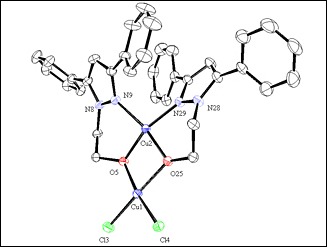The Chemistry in our Drugs

The research in coordination chemistry has grown progressively during the last decades. The potential application of hybrid ligands which permits to connect organic molecules to metal by two different heteroatoms (N, S, O, P, etc.) has focussed much interest.
In particular, the coordination behaviour of N-pyrazole ligands has been intensively studied for its potential applicability to different fields, pharmaceutical, catalyst and magnetic properties and others. These studies are extensively reported in the literature.
In the last 10 years, our group has focussed our aims in the synthesis and characterisation of N-pyrazole 1,3,5-trisubstituted ligands and we have studied their coordination behaviour with transition metals. One of our research lines is the synthesis and characterisation of N-pyrazole ligands substituted in the positions 3 and/or 5 by H, -CH3, -CF3, phenyl or pyridine groups and in the position 1 by hydroxyalkyl chain, -(CH2)n-OH.
In order to continue with this investigation, our goal is synthesise and characterise the ligand 2-(3,5-diphenyl-1H-pyrazol-1-il)ethanol (L) and study their coordination behaviour against Pd(II), Zn(II) and Cu(II).
In this paper, the synthesis of the ligand (L) is in one-step with a 96% yield. The three compounds (Pd(II), Zn(II) and Cu(II)), were characterised by elemental analyses, mass spectrometry, conductivity measurements, IR and RMN spectroscopy, and single crystal X-ray diffraction, while for compound of Cu(II), it has been characterised by magnetic measurements and EPR. The Pd(II) and Zn(II) are mononuclear compounds, however the Cu(II) is a dinuclear compound.
In this paper, we present the different coordination of the (L) ligand and the geometry imposed by the metallic centre lead to a diversity of structures and characteristics for each compound.
N-pirazole and O-pirazole ligands previously developed by the UAB research group.
References
"Study of the coordination behaviour of (3,5-diphenyl-1H-pyrazol-1-yl)ethanol against Pd(II), Zn(II) and Cu(II)". Sergio Múñoz, Josefina Pons, Josep Ros, Mercè Font-Bardía, Colin A. Kilner, Malcolm A. Halcrow. Inorganica Chimica Acta 373 (2011) 211-218.


